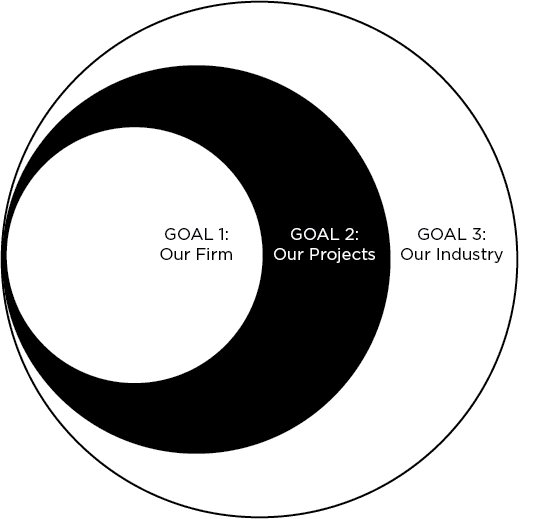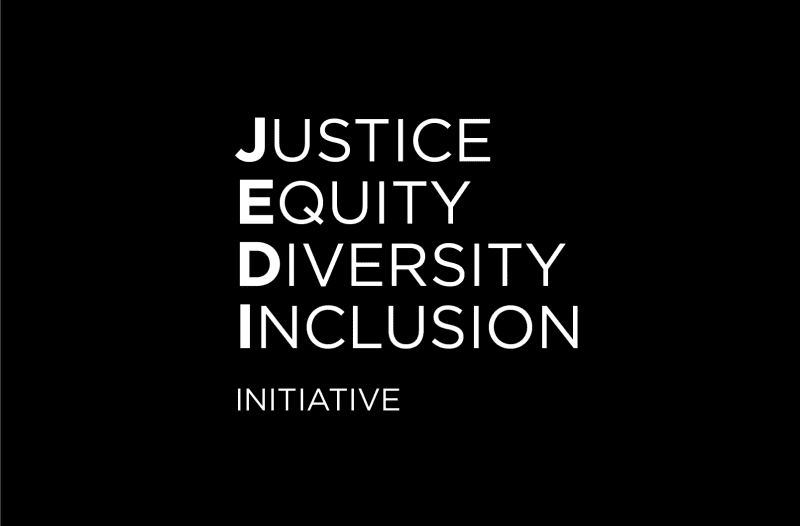Miller Hull
- Portfolio
- Approach
- News
- About
- Connect
The idea for what would become The Miller Hull Partnership started in villages of Brazil and Afghanistan.
The Miller Hull Partnership was founded in 1977 by David Miller and Robert Hull, partners with a defining background in the Peace Corps. As designers, they were profoundly influenced by the powerful landscape of the Pacific Northwest, which led to the firm’s enduring perspective on architecture that is intimately rooted in the human impact and context of the buildings we design. Miller Hull began by designing many award-winning earth sheltered and solar buildings in the early 1980s. Today, David and Robert’s passion for and tradition of creating dynamic and environmentally sensitive buildings represents the essence of our identity and continues to push our work forward.
People
Our ability to design beautiful, meaningful places flows from a team of curious and engaged individuals who thrive in an open and collaborative studio environment. Building on a history of incredible consistency—fueled by growth from within, transparent leadership transition, and continual investigation at the boundaries of current thought—enables us to break new ground and not rest on past achievements or ideas.
The original partnership between Dave Miller and Bob Hull was formed out of mutual respect and an unwavering pursuit of design excellence, seasoned with fun and good humor. The bond between employees and the genuine pleasure we take in working and playing together is a testament to Dave and Bob’s continuing influence as we have expanded into a multi-studio West Coast architecture firm.
Social Equity
From volunteering in our communities to actively seeking to increase diversity and opportunity in our profession, Miller Hull is serious about our role in contributing to the social and cultural health of communities through design and practice. Read on for a review of some of the ways we commit to social equity within our own business and in our community beyond.
Acknowledgement
Black Lives Matter.
Following the murder of George Floyd, Breonna Taylor and the nation’s racial reckoning in the of summer 2020, Miller Hull took a hard look at our practices and policies with a Justice, Equity, Diversity and Inclusion (JEDI) lens. We believe that through actionable and systemic change within Miller Hull, we can shape our workplace into an equitable and safe space for Black, Indigenous and People of Color, and ultimately for all staff members. We aim to create a work environment where all staff feel valued, seen and heard.Equity Lab
The mission of Equity Lab is to create an anti-racist environment within Miller Hull that empowers all individuals in our community to feel seen, affirmed, understood, valued, supported, respected, protected, and welcomed. We must continually evaluate our progress while remaining open to criticism, discomfort, and learning as we acknowledge that although we don’t have all the answers, we have an obligation to move the dial in an anti-racist direction.
By equipping our internal Miller Hull community with the tools, knowledge, and skills to better understand the necessity and urgency of justice, equity, diversity, and inclusion work, we can promote anti-racism in all facets of our work and business. Equity Lab is an advisory group of individuals within the Miller Hull Partnership who collectively provide recommendations, support and guidance as we continue on our JEDI path. Equity Lab is also introspective, self-evaluating and evolving – we aim to hold ourselves and our community accountable to a high standard of anti-racist practice and recognize that as we are in the beginning of the journey, our methods and make up may change to better achieve diversity, equity and inclusion.
We believe that architecture designed by teams of diverse, multicultural and multiracial talent starts from a broader basis of understanding and results in a built environment better designed for all people.
We do the work best when we do it together. We do the best work when we include all voices.
JEDI Initiative
Miller Hull aspires to Do Good, Go Deep and Be Bold. Since we’re at the beginning of our anti-racist journey, this Initiative serves to describe what we believe is possible for us as a firm, and not what is mandated by either Federal or State law. By publishing this Initiative, we seek to set an example of racial equity, opportunity, and sponsorship for the profession of architecture. We acknowledge there will be both success and failures; we commit to celebrating our success and will create learning opportunities from our failures. Therefore, this Initiative will be a living document, which will be regularly discussed, revised, and updated, in the process of realizing Miller Hull’s potential.
Leading With Race. Equity Lab recognizes the importance of ending all forms of oppression, and in version 1.1 of the Miller Hull JEDI Initiative we have chosen to lead with race as the best way to work toward that goal. Race is unique in that there is not a single example of any system in our society that does not suffer from racial disparities in outcomes. Race is also unique in that inequities based on race exist within every other dimension of identity, such as income, gender, sexuality, education, and age. The tools we use to understand and eliminate systemic racism can also be used to understand and eliminate other systemic oppressions. Leading with race is an inherently intersectional approach that we believe provides the best way to ensure our work produces positive change in the lived experiences of every person in our community.
- Miller Hull JEDI Initiative Goals
Our JEDI Initiative is broken into three key goals:
Goal 1: Miller Hull fosters an anti-racist environment that empowers all individuals in our community to feel seen, affirmed, understood, valued, protected, and welcomed.
Goal 2: Miller Hull designs equitable projects.
Goal 3: Miller Hull practices in an anti-racist Architecture, Engineering and Construction (AEC) industry.

- Miller Hull JEDI Initiative
Additional Initiatives
Our commitment to create an equitable workplace and improve our professional industry is guided by these initiatives and certifications.
- JUST
We were among the first companies to achieve a JUST label, a social justice transparency platform and disclosure tool developed by the International Living Future Institute. The JUST label provides at-a-glance information in key social justice categories, such as diversity, equity, safety, employee benefit, local benefit and community stewardship. Using the JUST label as one of our guides, we continue to improve our metrics each year as we work towards a more just workplace for our employees. Click here to view our current JUST label.
- National Organization of Minority Architects
Miller Hull has committed to the NOMA NW 2020 Call to Action Pledge and the NOMA SoCal DEI Challenge 2020.
Open Studio
Open Studio is an introductory architecture program designed to provide high school students an opportunity to explore architecture as a practice and potential profession. Through outreach and education, the goal of the program is to introduce architecture to a diverse group of high-school students who may not have previously considered architecture as a career path and prepare students for a successful architectural education in college. We also offer paid internships for one high school student each summer.
Pro Bono Design Services
Since 2005, Miller Hull has participated in the 1+ program donating at least 1% of our collective working hours pro bono every year to non-profit organizations that require but cannot afford architectural services. Donating services enables us to share our professional expertise to those in need and who share a common mission supporting progressive environmentalism and social equity focused causes in our community.
Some of our 1+ projects include Bayside Community Center, Matt’s Place, Mighty House, and the ROOTS Young Adult Shelter.
Engagement
The legacy of David Miller and Robert Hull’s experience in the Peace Corps laid the foundation for our firm’s ongoing service to our communities. We actively share our time, resources and expertise with a range of design, community and environmentally-oriented organizations.
Scholarship Programs
Our partners honor their alma maters through endowed scholarships awarded annually to design students (administered by each university on our behalf).
- Washington State University | The Miller Hull Partnership Design Excellence Scholarship
Contact | Matthew Cohen, cohenm@wsu.edu
Washington State University Department of Architecture
- University of Washington | The Miller Hull Partnership Endowed Scholarship Fund
Contact| Claudine Manio, Claudine@uw.edu
- University of Oregon | The Miller Hull Endowed Scholarship
Contact | Cindy Lundeen, clundeen@uoregon.edu.
Mentorship | Teaching
Miller Hull is committed to educating and inspiring students who are the future of our profession.
- ACE Mentorship Program
Colleagues in both Seattle and San Diego studios partner with local AEC design professionals in a six-month program introducing high school students to architecture, engineering and construction.
- University of Washington
David Miller is a tenured professor, and several Miller Hull staff serve as adjunct teachers and offer studio reviews in the College of Built Environments.
- Washington State University 'Imagine Tomorrow' Program
We critique projects and jury this annual program for K-12 students exploring the transition to alternate energy sources through research and innovation.
- New School for Architecture, San Diego
Members of our team are on the school advisory board, regularly present to classes and critique student projects.
Charitable Activities
We aim to contribute an amount equal to 1% of our target net revenue every year. We support numerous organizations through annual contributions, sponsorships, board and volunteer involvement, and are active participants in a range of conservation and service projects.
- Design industry
- ACE Mentor Program
- AIA
- AIA 2030
- ARCADE
- Architects without Borders
- Center for Architecture & Design (Seattle)
- Commercial Real Estate Women (CREW)
- Design Build Institute of America
- Design in Public | Seattle Design Festival
- Health Product Declaration Collaborative
- International Living Futures Institute (ILFI)
- National Association of Minority Architects (NOMA)
- Society for College & University Planning (SCUP)
- Seattle Architecture Foundation
- Society for Marketing Professional Services (SMPS)
- Space.City
- Urban Land Institute (ULI)
- US Green Building Council (USGBC) San Diego
- UW Professional Advisory Council
- Verdical Group
- Community-focused
- BLOCK Project
- Cascade Bicycle Club
- Community Lake-to-Bay Trail
- Fare Start
- Food Lifeline
- Habitat for Humanity
- Living Coast Discovery Center
- Posado’s Safe Haven
- Rural Studio (Auburn University)
- San Diego Food Bank
- San Diego River Park
- Sawhorse Revolution
- Seattle Aquarium Foundation
- United Way
- University of Washington’s Women’s Center
- Urban Discovery Academy
- Water 1st International
- Environmental
- Bonneville Environmental Foundation
- Carbon Solutions
- Forterra
- Nature Bridge
- Puget Soundkeeper Alliance
- Client-Based
- King County Library Services
- Northwest Railway History Center
- Pike Place Market Foundation
- Technology Access Foundation
- Open Window School
- Sahar Foundation
- San Diego Zoo Foundation
- Professional Organizations
- Greater Seattle Chamber of Commerce
Bob Hull Research Grant
Research has always been a part of every great project at Miller Hull and has often led to the design breakthroughs that define our best work. But much of this research has typically been conducted within the confines of a single project, often constrained by fee and schedule.
What could we accomplish if research is freed from day-to-day project constraints?
Meaningful research that extends beyond the current trends of architectural practice and changes the course of how we practice in the future requires rigorous research methods, dedicated principal investigators and appropriate levels of funding. Developing partnerships with academic and industry leaders could further leverage our efforts and make a deeper impact.The Bob Hull Research Grant is awarded to one project annually to carry out research that is of both a personal interest and of benefit to the firm.
Recipients
Trajectories, Corey Collier (2018)
Constructing Media, Vlanka Catalan and Sarah Chan (2019)
Afterthoughts, Alex Wolfrum (2021)
Decoding Informality, Tobias Jimenez (2022)
After Urbanism, Bradly Gunn (2023)××
